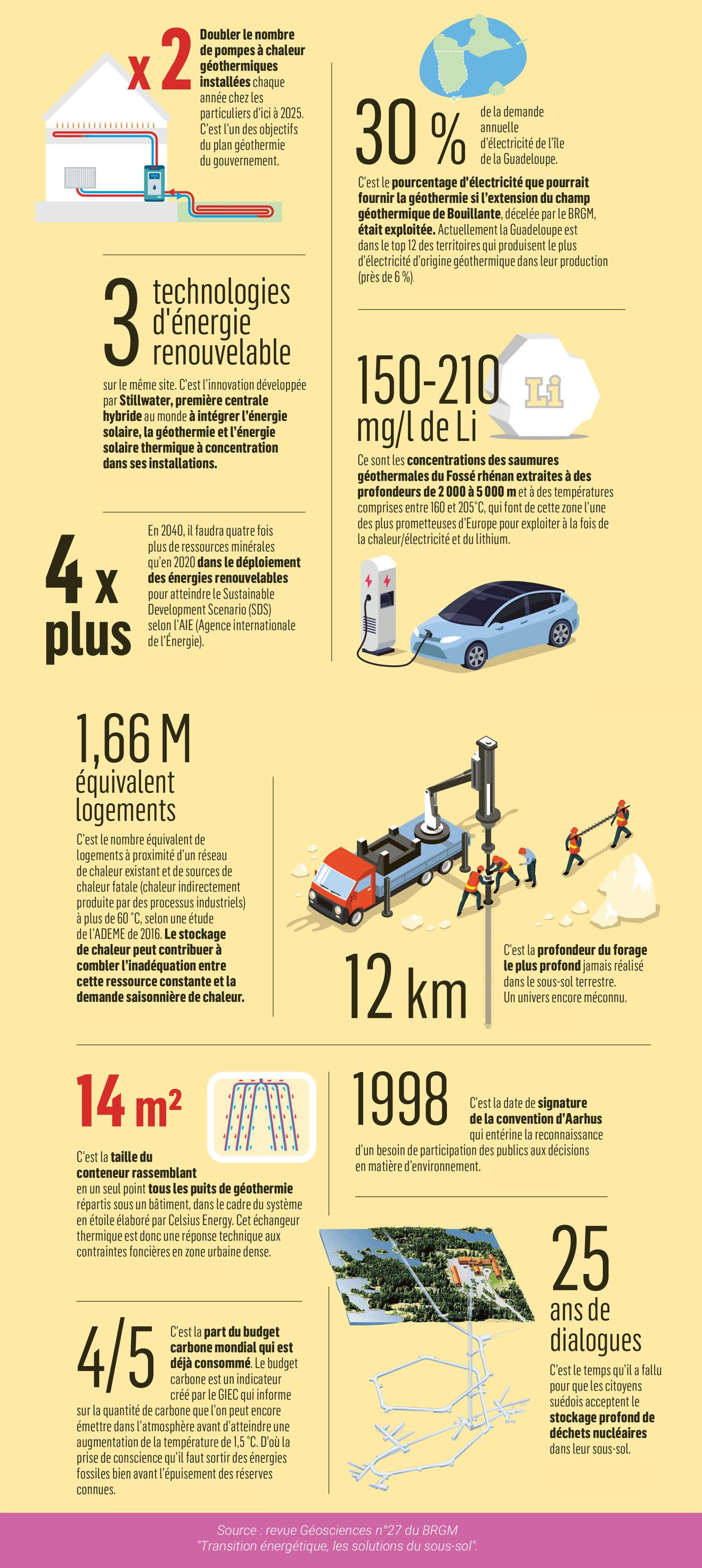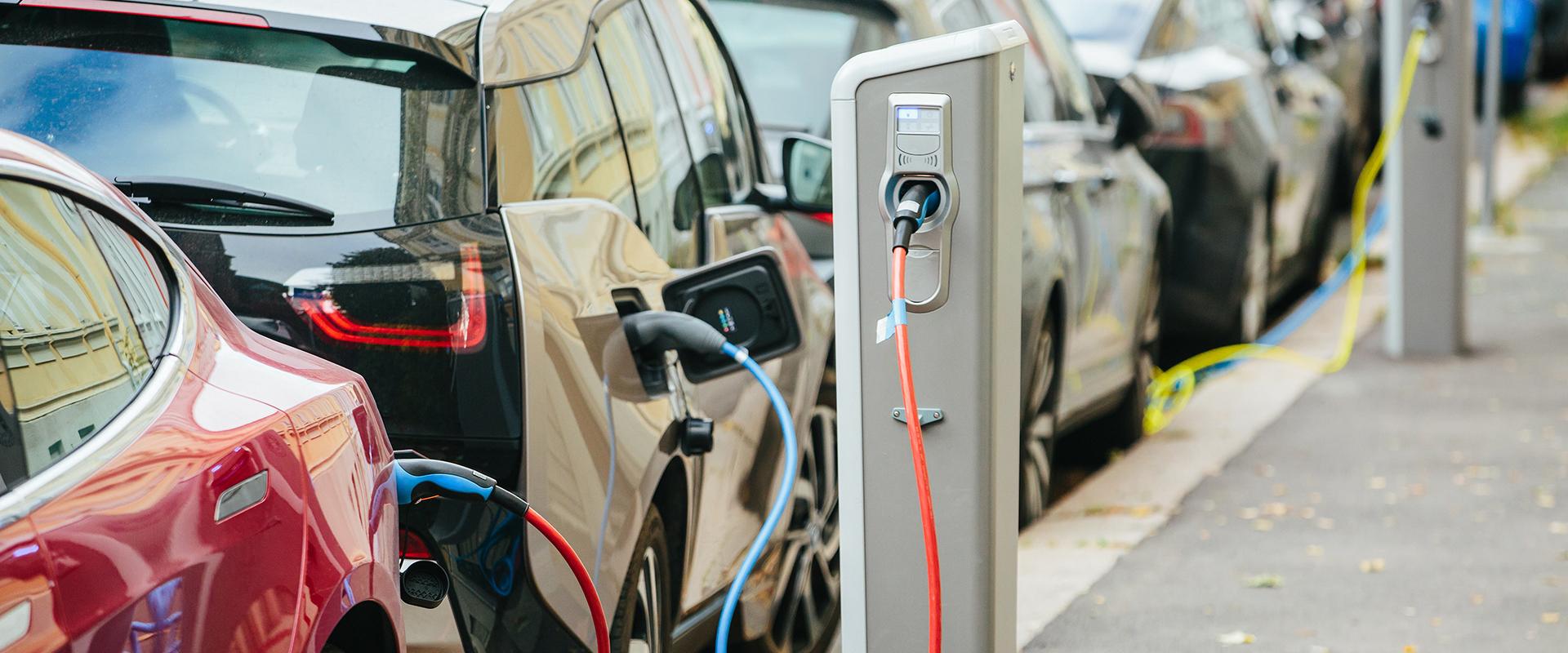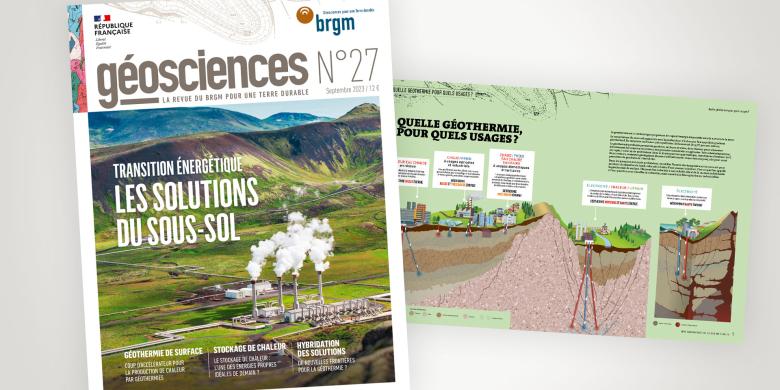
"Key figures" infographic from Géosciences journal, issue 27, entitled "Subsurface solutions for the Energy Transition".
© BRGM
Detailed description
- Double the number of geothermal heat pumps installed each year in private homes by 2025. This is one of the objectives of the government's geothermal energy plan.
- 30% of Guadeloupe's annual electricity demand. This is the percentage of electricity that could be generated by geothermal energy if the extension of the Bouillante geothermal field, identified by BRGM, were to be exploited. Guadeloupe is currently one of the top 12 regions in terms of the proportion of geothermal electricity in its total production (almost 6%).
- 3 renewable energy technologies on the same site. This is the innovation developed by Stillwater, the first hybrid power plant in the world to integrate solar energy, geothermal energy and concentrated solar thermal energy in its facilities.
- 150-210 mg/l Li. The concentrations of geothermal brine in the Rhine Graben, extracted at depths of 2,000 to 5,000 metres and at temperatures of between 160 and 205°C, make this one of the most promising areas in Europe for exploiting both heat/electricity and lithium.
- 4x more. By 2040, the deployment of renewable energies will require four times as many mineral resources as in 2020 to achieve the Sustainable Development Scenario (SDS), according to the IEA (International Energy Agency).
- 1.66 million equivalent homes. This is the equivalent number of homes near an existing heating network and sources of waste heat (heat indirectly produced by industrial processes) at temperatures of over 60°C, according to a 2016 ADEME study. Heat storage can help to bridge the gap between this constant resource and the seasonal demand for heat.
- 12 km. This is the depth of the deepest borehole ever drilled into the Earth’s subsurface. A little-known world.
- 14 m2. That is the size of the container grouping all the geothermal wells under a building together in one place, as part of the star-shaped system developed by Celsius Energy. This heat exchanger is a technical solution to land constraints in dense urban areas.
- 1998. The date of signature of the Aarhus Convention, which confirmed the recognition of the need for public participation in environmental decision-making.
- 4/5. That is how much of the global carbon budget has already been used up. The carbon budget is an indicator created by the IPCC that provides information on the amount of carbon that can still be emitted into the atmosphere before the mean global temperature rises by 1.5°C. Hence the realisation that we need to move away from fossil fuels well before known reserves are exhausted.
- 25 years of consensus-building. That is how long it took for Swedish citizens to accept the deep underground storage of nuclear waste in Sweden.
Geosciences No. 27: Subsurface solutions for the Energy Transition
Geothermal energy, CO2 or heat storage, access to mineral resources and more. This issue of Géosciences looks at the potential of the subsurface for the energy transition.
Associating the subsurface with the energy transition may appear incongruous. Wind turbines, photovoltaic panels, or possibly hydroelectric dams and nuclear power stations come more readily to mind. And yet, the energy and ecological transition that will gradually lead us to develop low-carbon energy will require us to make increasing use of the resources and potential of the subsurface.
Issue 27 of BRGM's Géosciences magazine investigates subsurface solutions: geothermal energy, CO2 storage, heat storage and hybridisation of these different solutions with other sources of renewable energy. It also looks at access to mineral resources, which are vital to the success of the energy transition.






